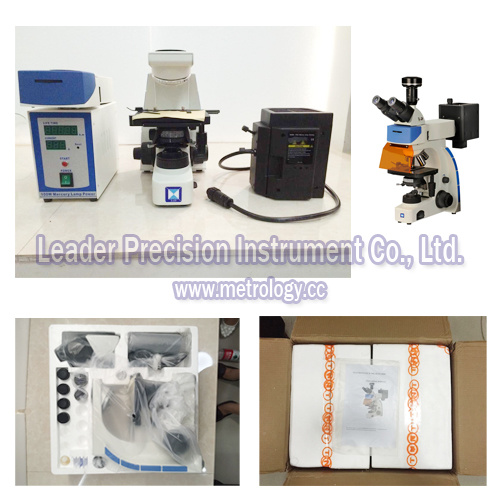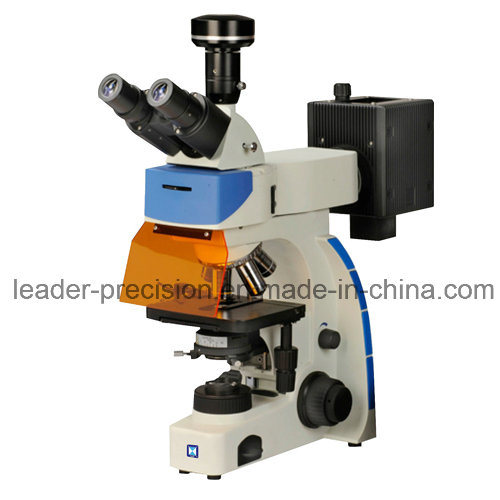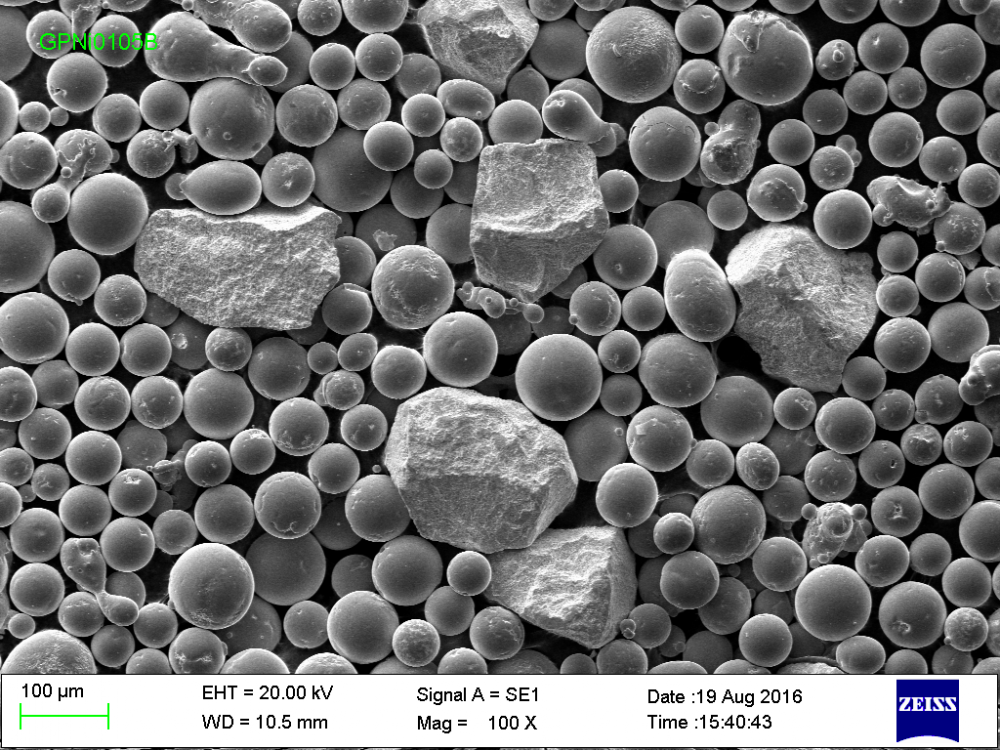PTA Powder
Main application:Repair and
strengthen workpiece surface, significantly
Welding method:PTA welding
Main equipment:PTA welding
machine
Flame core temperature: about 10000℃
Technological characteristics:PTA has high
temperature, concentrated energy, stable combustion, small heat affected zone,
fast welding speed, high production efficiency, easy to obtain low dilution
rate of surfacing layer, surfacing layer and workpiece matrix are metallurgical
bonding,, bonding strength is high.
PTA welding technology is one of surface
strengthening methods, which has high deposition rate, low dilution rate, and
could be applied with many kinds of powder. The manufacturing craft of PTA
powder is normally gas atomization, which reduces satellite of powder. We
supply 4 main categories of PTA powder: Nickel-based alloy powder, Iron-based
alloy powder, Cobalt-based alloy powder and Mixed Powder.
Nickel Based Alloy Powder possesses high
temperature resistance and wear resistance, it is the most popular alloy powder
applied by PTA welding both domestically and internationally. Coating hardness
is within the range of HRC 30-60. It could be applied to various industries
like agriculture, plastic, paper, marine and steel making where wear and
corrosion protection needed. Some examples are plunger, moulds, pump leaf and
screw.
Iron Based Alloy Powder is more widely used
and a more economic choice. With high abrasive resistance, it is more commonly
applied to mining tools, drilling tools and mixers of iron and steel making
industry, coal industry, shaft, oil and energy industry.
Cobalt Based Alloy Powder is recommended
for corrosion and oxidation resistance, with better hot hardness values than
equivalent Nickel based alloy powder. It is widely applied to steel making
industry, coal industry and mining industry.
Mixed powder mainly refers to NiCrBSi
mixing with other hard-phase powder such as cast tungsten carbide and other cemented
alloy powder, which allows the powder better hardness around HRC60 and
excellent abrasion resistance.
Mixed powder is more often used for mining
equipment for oil sands, lignite, oil drilling tools, excavator buckets,
extrusion screws for plastic processing, grain and oil processing, etc.
PTA Powder,Iron Based Alloy Powder,Cobalt Based Alloy Powder,Nickel Based Alloy Powder Luoyang Golden Egret Geotools Co., Ltd , https://www.hvafspray.com
Â
Fluorescence biological microscope (Fluorescence microscope): Fluorescence microscopy is an ultraviolet light source to irradiate the object to be seized, making it fluoresce, then observe the shape of the object and its location under a microscope. Fluorescence microscopy is used to study the absorption of intracellular material, transportation, chemicals distribution and positioning. Cells Some substances, such as chlorophyll, after ultraviolet irradiation fluoresce; while some, although the substance itself is not fluorescent, but if you use a fluorescent dye or fluorescent antibody staining, exposure to ultraviolet light can fluoresce, the fluorescence microscope is on the such material was one of the tools of qualitative and quantitative research.
Trinocular Fluorescence microscope is also named digital fluorescence microscopy, which can connect with digital camera and PC, this digital microscopy is widely used in biological area, especially in cell research and inspection in Hospitals, research institutes
Technical Data
Fluorescence unit
Standard Delivery
Optional Accessories
  LED light
Picture: (inner package and outer package)

Â
Fluorescence biological microscope (Fluorescence microscope): Fluorescence microscopy is an ultraviolet light source to irradiate the object to be seized, making it fluoresce, then observe the shape of the object and its location under a microscope. Fluorescence microscopy is used to study the absorption of intracellular material, transportation, chemicals distribution and positioning. Cells Some substances, such as chlorophyll, after ultraviolet irradiation fluoresce; while some, although the substance itself is not fluorescent, but if you use a fluorescent dye or fluorescent antibody staining, exposure to ultraviolet light can fluoresce, the fluorescence microscope is on the such material was one of the tools of qualitative and quantitative research.
Trinocular Fluorescence microscope is also named digital fluorescence microscopy, which can connect with digital camera and PC, this digital microscopy is widely used in biological area, especially in cell research and inspection in Hospitals, research institutes
Technical Data
Fluorescence unit
Standard Delivery
Optional Accessories
  LED light
Picture: (inner package and outer package)


Model NO.: LF-302
Shape: Single-lens
Usage: Research
Principle: Optics
Principle of Optics: Differential Interference Contrast Microscope
Eyepiece: Wf10X/20
Plan Achromatic Objective: 4X, 10X, 40X, 100X(Oil)
Nospiece: Quintuple
Mechanical Movable Stage Size: 156*138mm
Mechanical Movable Stage Travel: 76*54mm
Interpupilary Distance: 52~75mm
Trinocular Tube: Inclined 30
Diopter Adjustment: 5 Diopter
Illumination: 6V/20W Halogen Bulb/ LED
Fluorescence Unit: Chroma Filter System UV, V, B, G
Trademark: Leader
Transport Package: Standard Exporting Packing
Specification: SGS
Origin: China
HS Code: 9011200000
Model NO.: LF-302
Shape: Single-lens
Usage: Research
Principle: Optics
Principle of Optics: Differential Interference Contrast Microscope
Eyepiece: Wf10X/20
Plan Achromatic Objective: 4X, 10X, 40X, 100X(Oil)
Nospiece: Quintuple
Mechanical Movable Stage Size: 156*138mm
Mechanical Movable Stage Travel: 76*54mm
Interpupilary Distance: 52~75mm
Trinocular Tube: Inclined 30
Diopter Adjustment: 5 Diopter
Illumination: 6V/20W Halogen Bulb/ LED
Fluorescence Unit: Chroma Filter System UV, V, B, G
Trademark: Leader
Transport Package: Standard Exporting Packing
Specification: SGS
Origin: China
HS Code: 9011200000
LED Illumination Trinocular Digital Fluorescence Biological Microscope (LF-302)Â
Eyepiece
SWF10X/20
Objective lens
4x, 10x, 40x, 100x(oil)
Mechanical movable stage
Size: 156*138mm, Travel: 76*54mm
Interpupillary distance
52mm-75mm
Trinocular tube
Inclined 30º.
Diopter adjustment
±5 diopter
Illumination
6V/20W halogen bulb
Mercury lamp house 100W/DC
Chroma filter system UV, V, B, G
Power supply
110v-220v wide voltage
Â
Â
Â
  Main unit: 1pcs
  4x, 10x, 40x, 100x(oil) plan achromatic objective: 1pcs each
  6V/20W Osram halogen bulb: 1pcs
  Blue filter: 1pcs
  Anti-dust cover: 1pcs
Â
Â
  2x, 20x, 60x plan achromatic objective
  0.5x, 1x C-mount camear adapter
  3.0M pixel digital camera
  5.0M pixel digital camera
  CCD camera
  Fluorescence analysis software
Â
Eyepiece
SWF10X/20
Objective lens
4x, 10x, 40x, 100x(oil)
Mechanical movable stage
Size: 156*138mm, Travel: 76*54mm
Interpupillary distance
52mm-75mm
Trinocular tube
Inclined 30º.
Diopter adjustment
±5 diopter
Illumination
6V/20W halogen bulb
Mercury lamp house 100W/DC
Chroma filter system UV, V, B, G
Power supply
110v-220v wide voltage
Â
Â
Â
  Main unit: 1pcs
  4x, 10x, 40x, 100x(oil) plan achromatic objective: 1pcs each
  6V/20W Osram halogen bulb: 1pcs
  Blue filter: 1pcs
  Anti-dust cover: 1pcs
Â
Â
  2x, 20x, 60x plan achromatic objective
  0.5x, 1x C-mount camear adapter
  3.0M pixel digital camera
  5.0M pixel digital camera
  CCD camera
  Fluorescence analysis software